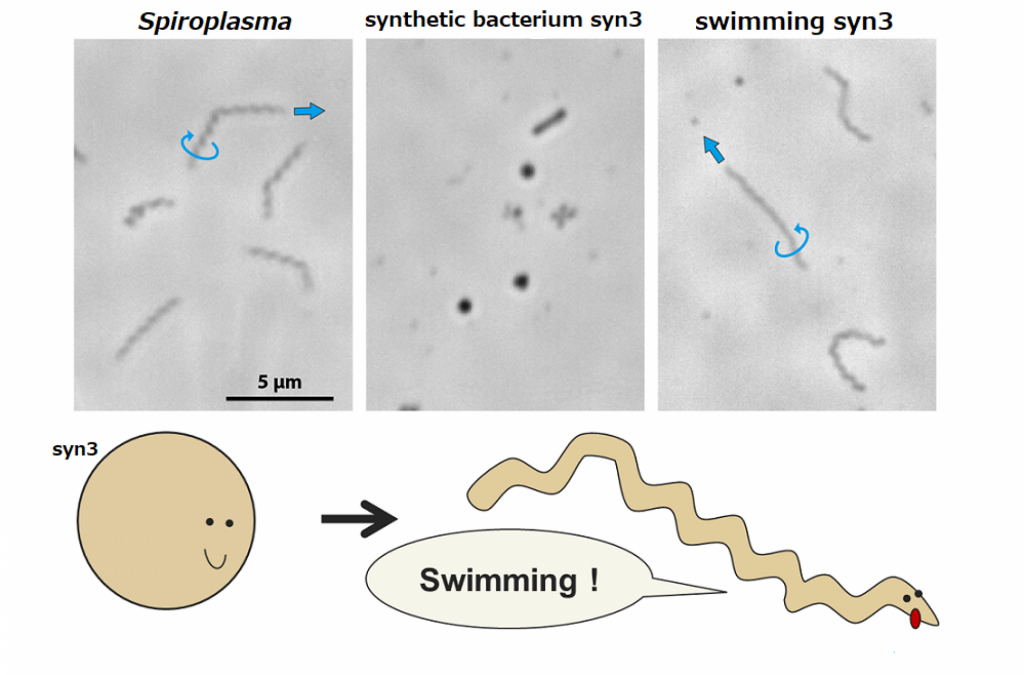Japanese researchers at Osaka Metropolitan University have engineered the smallest motile life form ever. They introduced seven bacterial proteins into a synthetic bacterium, allowing it to move independently.
The research gives an in-depth understanding of evolution and the origins of motility.
The team experimented with syn-3 by introducing seven genes that code for proteins that are likely involved in the swimming motion of Spiroplasma bacteria. Spiroplasma is a small natural bacterium, known to “swim” by reversing the direction of its helix.
After adding these proteins, the syn-3 changed from its usual round form to the same helix shape as Spiroplasma and was now able to swim using the same technique.

“Our swimming syn3 can be said to be the ‘smallest mobile lifeform’ with the ability to move on its own,” said Professor Makoto Miyata, co-lead author of the study. “The results of this research are expected to advance how we understand the evolution and origins of cell motility.”
“Studying the world’s smallest bacterium with the smallest functional motor apparatus could be used to develop movement for cell-mimicking microrobots or protein-based motors.”
They discovered that only two proteins were necessary for promoting motility in syn-3, likely indicating that many of the proteins were redundant and demonstrating a minimal system for motility.
The research helps answer the basic questions about the earliest life forms and genomes involved in their mobility. The acts of running, swimming, sprawling, or moving all can be dated back to cellular movement.
“Our swimming syn3 can be said to be the ‘smallest mobile lifeform’ with the ability to move on its own,” said Professor Miyata. “The results of this research are expected to advance how we understand the evolution and origins of cell motility.”

“Studying the world’s smallest bacterium with the smallest functional motor apparatus could be used to develop movement for cell-mimicking microrobots or protein-based motors”
The study was published in Scientific Advances. It was done together by the graduate student Hana Kiyama from the Graduate School of Science at Osaka City University and Professor Makoto Miyata from the Graduate School of Science at Osaka Metropolitan University.


